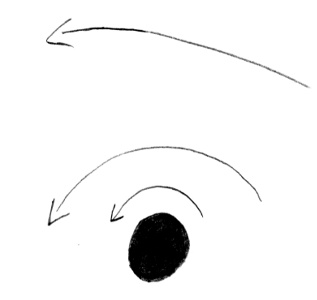
I've been thinking about overcorrection, when you try to fix something but go too far and end up in an extreme opposite position. For example, you want to stop eating so much, but instead of gently reducing your intake to a sustainable level, you go all out on some fasting diet. A system that overcorrects tends to oscillate, because after overcorrecting it overcorrects back in the other direction. For this reason, it's usually considered a bad thing.
But I think that, in people, overcorrection gets an unnecessarily bad rap. Yo-yo dieting or spontaneous bursts of exercise are overcorrections, sure, but the reason they don't work is mostly because the effort required to sustain them is too much. However, that doesn't have to be the case. You could end up in a position more extreme than you really want, but is still sustainable. For example, going cold turkey on drinking or deciding to run every day even though three times a week would be sufficient.
And in that sense, overcorrection can actually be beneficial. We're ultimately creatures of habit, association machines, and when doing something similar to our previous behaviour it essentially pits a strong association against a weak one. Going too far can pull you out of the sphere of influence of that old habit. Another way to put it is that our habits give us a lot of positive stability, which sometimes makes us undercorrect. To compensate for that, it can make sense to overcorrect.
In fact, I think that an aversion to overcorrection can be a dangerous thing. It might seem more reasonable to make incremental changes and avoid overshooting the mark, but it's very difficult to achieve slow progress against a background of a profoundly homeostatic system. Restricting yourself to incremental change might mean no change at all.
It's been a couple of months since my last set of prototypes, but this week I made 3 as part of working on my sliding blocks puzzle. It was actually pretty fun having a sequence of prototypes leading up to a final piece of work, and I might try and see if I can swing that more often.
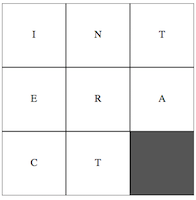
This was my first version of sliding blocks with no colours or other features, just enough to support tiles and sliding.
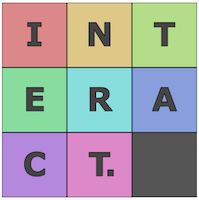
This version added touch support, fonts and colours, as well as the dot trick to distinguish between the two "T"s. This is basically the version that ended up on the interactlets post.
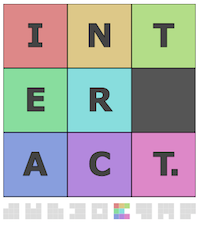
Finally, this version added randomisation and the solution mosaics. I also added more content and code comments to the version that actually made it onto the post, so that's the place to go for the most final version. I didn't count the rest of that work as a prototype since it was really just polish.
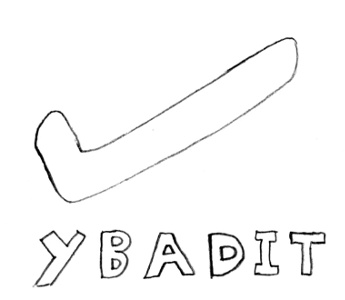
It's easy to make the mistake of thinking you know how to do something because you understand it. I remember when I was studying I used to have the worst habit of reading through the chapter for some topic, getting to the problems at the end, and thinking, well, if I understand the material why bother with the exercises? Of course, inevitably it would turn out I couldn't actually do it as well as I thought.
Really, there are two issues. The first is that it's easy to overestimate your understanding. This comes up when someone asks you about something you read about, but you find yourself unable to explain. "Uh, well, entropy is... y'know, it's about states, and... how many states there are? And it's also temperature? Something like that." It's just very easy to fool yourself into getting the feeling of understanding without the reality of understanding.
But the second issue is that skill and knowledge aren't the same thing. You can know everything about painting without being able to hold a brush, and you can know exactly how matrix row reduction works but still not be very good at actually doing it. Depending on the domain, that can just make you slower at performing the skill than someone who has practiced, or actually not translate into skill at all. A lifetime of gymnastics study will not in any way qualify you to do a backflip, because the physical skill has to be acquired through physical learning.
And yet the temptation remains. I think this just comes down to ease. Understanding something, or at least feeling like you understand something, is in a much better place on the cost-benefit curve. Experiential learning is repetitive and sometimes tedious, whereas understanding something intellectually stays at whatever level of challenge you can accept. The more you are used to the feeling of intellectual challenge, the worse it is, because there really is nothing intellectually challenging about drawing circles for a few hours.
For physical pursuits, at least, this seems to be a recognised and accepted necessity. Nobody seriously suggests that understanding how a violin works qualifies you to play one. However, experiential learning also applies to purely mental skills as well. Being able to speak another language, make small talk at parties, or stay focused during work are all mental skills that must be learned experientially, but because they're purely mental it's much more tempting to assume that understanding them is the same as being able to do them.
To counteract this tendency, I suggest that when you think you understand something to say to yourself "yeah but actually do it though", or, in catchy acronym form, YBADIT. Actually doing it is the best way to find out if you really understand something or just think you understand, and to check whether your understanding translates into actual ability.
INT
ERA
CT.
I fleshed out yesterday's interactlet demo into a little puzzle game with some actual gameplay. It's pretty fun!
You can play a standalone version on my demoserver or check out the code on Github
INT
ERA
CT.
There are lots of different reasons why you might use images to accompany an idea. If you want to use data to support the idea you might include a graph. If you want to explain the idea visually you might use a diagram. But sometimes you just want to add a bit of visual flair, or convey some sentiment that comes across better visually, even if it isn't the whole point of what you're doing.
This is the basis that I use for adding drawings to my posts; the goal isn't to do the work of the writing, or to act as a more efficient delivery mechanism for information. Rather, the drawings are illustrations: they complement the text, but are totally separable. In a way, I just do two different pieces of work for one idea, and put them both in the same place. Sometimes they end up closely related, but often they're totally different and could really stand on their own.
What I'm interested in is: could you take this concept, a little standalone illustration designed to complement some main representation of an idea, and make an interactive equivalent? We use animations and interactions a lot, but they're mostly designed to be functional, like in this fairly comprehensive Google design manual. I think that's right and good as far as interactions that are the point of what you're doing. But what's so bad about pointless interaction?
Sure, nobody wants a repeat of the Flash-fueled madness of the 2000s, or the gif hell of the 1990s. I'm not advocating a return to animated starfield backgrounds or neon menus that fly around and course with faux-lightning. Instead I'm talking about small, self-contained pieces of interactivity, kind of like little windows into an interactive idea. If you want to interact with them, you can. If not, just ignore them. They don't move unless you want them to.
I think of this concept as an interactlet, a little piece of interaction. Interactlets exist in a bounded area, only respond to your input, are simple enough to understand immediately, and exist to complement some other work. Nicky Case and Vi Hart's Parable of the Polygons is an example of something close to this, but different in some important ways. The polygons are always moving, and the text is about the interactivity. It's a good post, but the interactive simulation is the point, and interactlets are for when interactivity isn't the point, but you want to add some interaction anyway.
A better example is something like the "Do Not Erase" which has been up the top of my site since forever. It's small, self-contained, simple, and doesn't get in the way of anything else. Its only problem, if you could call it that, is that it doesn't obviously ask to be interacted with. I think that's fine for its particular role; I wouldn't want it to take attention away from the content, but if I was doing one as the complement to a post I would want it to be a bit more attention-seeking.
I've put an attempt in this post, because I think it's an idea worth exploring. The main intuition to keep in mind is that an interactlet is to interactivity what an illustration is to visual art. Not the main event, just a little extra.




